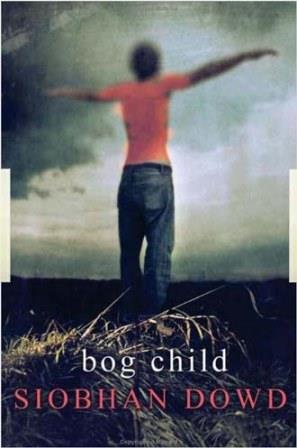
Dowd’s first novel, ‘A Swift Pure Cry’, was published in 2006 and received an extremely positive reception.
It won the 2007 Branford Boase Award and the Eilis Dillon Award, and it was short listed for the Carnegie Medal and the Booktrust Teenage Prize. Her second novel was also very well received, so when I tentatively chose Dowd’s third story for children off the shelf, I knew it had a lot to live up. Could it deliver? The question is particularly potent because the work was published posthumously, the author having passed away in August 2007. Would this be a gripping read or a punishing plod?
What’s it about?
The premise of ‘Bog Child’ is immediately intriguing: boy finds body preserved in a peat bog. Who was it? How did they die? Why did they die? And, crucially, when? However, this incident doesn’t form the dramatic crux of the storyline, which follows a young Irish boy through an important summer in his life, in which the discovery of this child is significant in many ways.
As the advertised storyline is so dramatic, it’s fortunate that Dowd doesn’t make us wait impatiently to meet this ‘child’. At the start of chapter one, we join Fergus and his Uncle Tally on an illicit turf cutting mission early some morning. These are characters we can engage with immediately: they know what they are doing is wrong, but it seems to be a kind of victimless wrong that vividly evokes the difficulties in their lives. It’s not long before Fergus finds ‘the child that time forgot’: a small body curled up in the bog. He initially assumes that the IRA are involved – welcome to Ireland in the early 1980s – but the pathologist dates the body back to the Iron age. Within pages, Fergus is hearing the voice of the girl he calls ‘Mel’ as she tells him her story.
And Mel is…?
Gradually, Mel’s history is revealed through a series of dreams Fergus experiences. Although the girl’s tale is a sad and often interesting one, it is never clear why or how this message is getting across to Fergus. The sections about Mel are in italics to separate her voice from his, but there seemed to be no physical or spiritual connection between them – Mel is not a ghost, reaching out from the past to explain herself, she is simply a disembodied voice. I found this detracted from my enjoyment slightly because the story seemed to be simply ‘slotted in’ to the modern day timescale. However, these histories are not as disjoined as my personal criticism might make them sound.
Indeed, thematically, the two stories both explore love, politics and sacrifice – perhaps unsurprisingly when the setting is Northern Ireland at the height of the Troubles – and do so in a surprisingly gentle way. Fergus McCann is a typical teenager who is struggling with the political divisions in Ireland. He’s about to take his A levels, which will be his key to escaping from Northern Ireland and the weight of politics, and this should be where his concentration lies. However, as the novel progresses his attention is diverted by several characters and events as he tries to move towards this goal.
Most crucially for Fergus, his brother Joe, a political prisoner, has become involved in the hunger strike sweeping Long Kesh. Their mam is distraught their but da is proud, and so Fergus finds himself torn between them. Can his family cope with this, or will the trauma pull them apart? Dowd successfully conveys how politics can become part of the domestic fabric of life. The family are depicted as being simultaneously able to interact normally, but also terribly aware of the shifting sands beneath them as Joe’s strike continues.
It’s a Young Adult novel…so where’s the romance?
The discovery of the bog child leads Fergus to develop what seems to be his first romantic interest. Cora is the daughter of the archaeologist investigating Mel’s case, and her developing relationship with Fergus is convincing, if slightly sketchy in places, due to the way time is handled in the novel. Dowd has separated the story into sections which focus on a few days in Fergus’ life, so the reader has to imagine the bits of life that happen ‘inbetween’. This helps to create a realistic texture to the work as a whole.
As if this wasn’t enough to tax one seventeen year old boy, (who is also trying to take his driving test,) Fergus finds himself inexorably swept into illicit activity that could threaten the very future he is building…
Final thoughts
The characters and their interactions with each other are convincing in this slow burning tale of one boy and one girl’s attempts to keep the peace in their own homes and communities. While not quite un-put-down-able, the story is very readable and will raise some issues – about how to treat preserved bodies, and how far to respect other people’s wishes, in particular – which will mean you will be thinking about the characters involved long after you turn the final page.
The ending is possible to guess, although the final twists happen very quickly and might have been given some more space to unfold. The reversals are convincing and the final mood is slightly elegiac, which is in keeping with the sense that this is Fergus’ last summer as a child.
Overall, this is a well realised account of a busy summer in a troubled society.